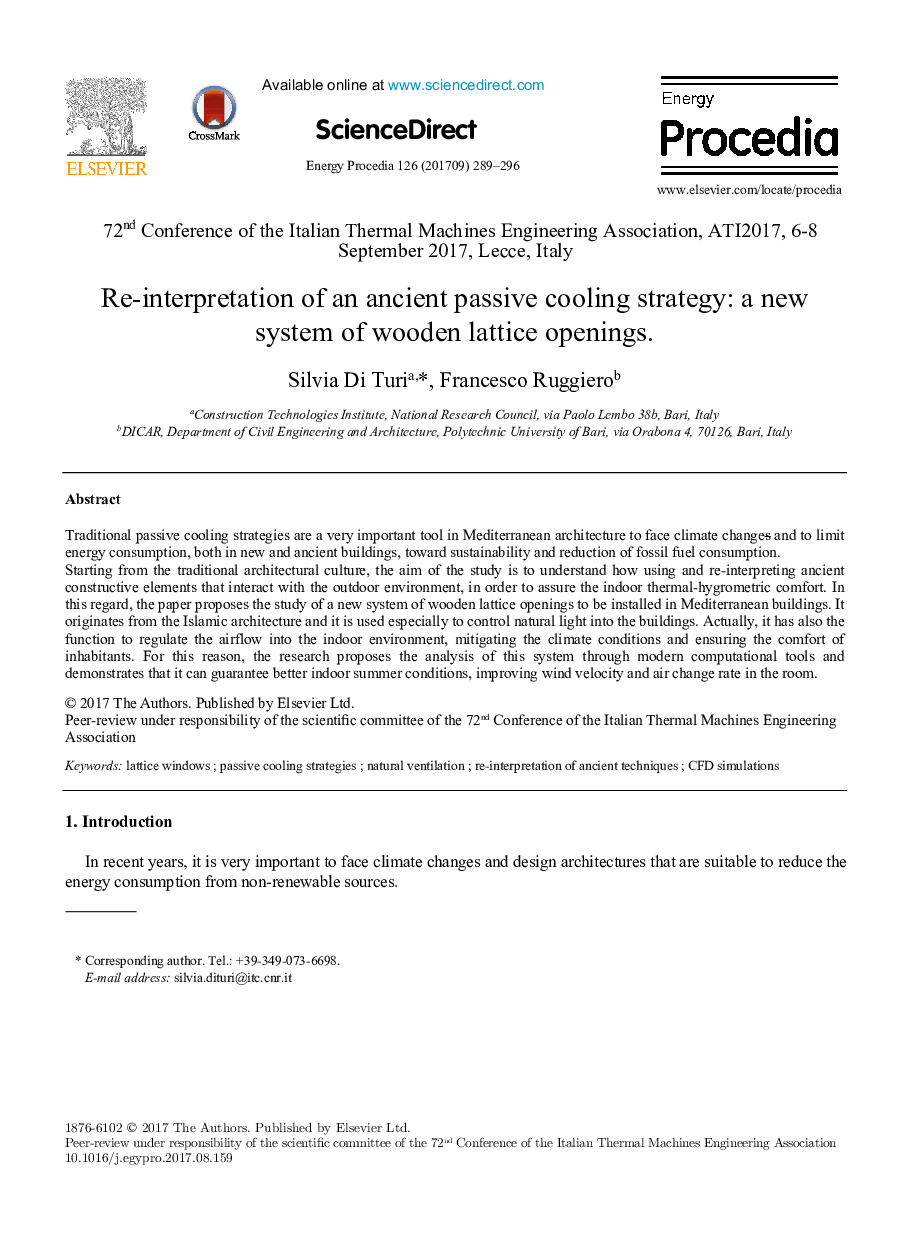| کد مقاله | کد نشریه | سال انتشار | مقاله انگلیسی | نسخه تمام متن |
|---|---|---|---|---|
| 5444466 | 1511109 | 2017 | 8 صفحه PDF | دانلود رایگان |
عنوان انگلیسی مقاله ISI
Re-interpretation of an ancient passive cooling strategy: a new system of wooden lattice openings
ترجمه فارسی عنوان
دوباره تفسیر یک استراتژی خنک کننده منفعل قدیمی: یک سیستم جدید از دهانه های شبکه چوبی
دانلود مقاله + سفارش ترجمه
دانلود مقاله ISI انگلیسی
رایگان برای ایرانیان
ترجمه چکیده
با شروع از فرهنگ معماری سنتی، هدف مطالعه این است که چگونه از استفاده و تفسیر عناصر سازنده باستانی که با محیط خارجی روبرو هستند، به منظور اطمینان از راحتی محیط حرارتی-هیدرو متریک استفاده شود. در این راستا، مقاله پیشنهاد می کند مطالعه یک سیستم جدید از دهانه های شبکه های چوبی که در ساختمان های مدیترانه نصب می شود. این معماری از معماری اسلامی است و مخصوصا برای کنترل نور طبیعی در ساختمان ها استفاده می شود. در واقع، این نیز عملکرد را تنظیم جریان هوا به محیط داخلی، کاهش شرایط آب و هوایی و تضمین راحتی از ساکنان. به همین علت، تحقیق، تجزیه و تحلیل این سیستم را با استفاده از ابزارهای محاسباتی مدرن پیشنهاد می کند و نشان می دهد که می تواند شرایط بهتر در فصل تابستان را بهبود بخشد، سرعت باد و سرعت تغییر هوا در اتاق را تضمین کند.
موضوعات مرتبط
مهندسی و علوم پایه
مهندسی انرژی
انرژی (عمومی)
چکیده انگلیسی
Starting from the traditional architectural culture, the aim of the study is to understand how using and re-interpreting ancient constructive elements that interact with the outdoor environment, in order to assure the indoor thermal-hygrometric comfort. In this regard, the paper proposes the study of a new system of wooden lattice openings to be installed in Mediterranean buildings. It originates from the Islamic architecture and it is used especially to control natural light into the buildings. Actually, it has also the function to regulate the airflow into the indoor environment, mitigating the climate conditions and ensuring the comfort of inhabitants. For this reason, the research proposes the analysis of this system through modern computational tools and demonstrates that it can guarantee better indoor summer conditions, improving wind velocity and air change rate in the room.
ناشر
Database: Elsevier - ScienceDirect (ساینس دایرکت)
Journal: Energy Procedia - Volume 126, September 2017, Pages 289-296
Journal: Energy Procedia - Volume 126, September 2017, Pages 289-296
نویسندگان
Silvia Di Turi, Francesco Ruggiero,
